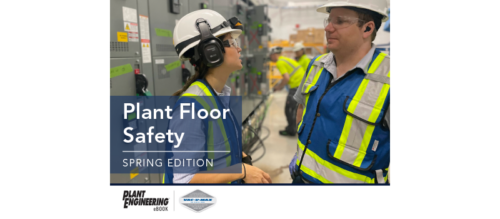Key changes to NFPA 13’s sprinkler system codes
The majority of adjustments made in the latest NFPA 13 standard clarify issues contained in the previous versions. However, some significant changes may impact manufacturing and warehouse facilities.
The National Fire Protection Association (NFPA) updated the NFPA 13: Standard for the Installation of Sprinkler Systems. The majority of adjustments clarify issues contained in the previous versions. However, some significant changes may impact manufacturing and warehouse facilities. Noting that not all local and state jurisdictions have adopted the 2013 version of NFPA 13, it’s important to check with the applicable permitting agencies to determine which version they use. Following is a list addressing NFPA 13 updates in key areas.
- Obstructions
The code has been further defined to clarify the terms "continuous" and "non-continuous". "Continuous" refers to obstructions that affect two or more adjacent sprinklers. - Antifreeze
Antifreeze systems installed after September 30, 2012 are required to use only NFPA listed antifreeze solutions (with exceptions), which will not ignite when discharged from a sprinkler. A qualified individual must test systems installed prior to this date annually. - Solid shelves
Early suppression, fast response (ESFR) sprinklers can be used with solid shelves if in-rack sprinklers are provided. - Building floor requirement
In buildings with more than two stories, each floor must have an individual floor sprinkler control valve to control the sprinkler supply on that level. - Shared piping
Piping for the sprinkler system can now also support other systems if an engineer professionally designs them. - Hazard occupancies
ESFR and Control Mode Specific Application (CMSA) sprinklers can now be used for light hazard occupancies in addition to ordinary hazard occupancies. - Hose stream allowance and water supply duration
The requirements for these two elements for fire protection have been updated by sprinkler type and size of the remote area.
It’s important to review NFPA 13 closely and consult with design professionals to ensure your facility is in compliance.
Tony Lamell has more than 35 years experience in the design of domestic and international projects. Stellar is an integrated firm focused on planning, design, pre-construction, construction, refrigeration, mechanical & utility, building envelope, and total operations & maintenance services. Stellar is a content partner of CFE Media. Edited by Joy Chang, digital project manager, CFE Media, jchang(at)cfemedia.com
Original content can be found at stellarfoodforthought.net.
Do you have experience and expertise with the topics mentioned in this content? You should consider contributing to our CFE Media editorial team and getting the recognition you and your company deserve. Click here to start this process.


